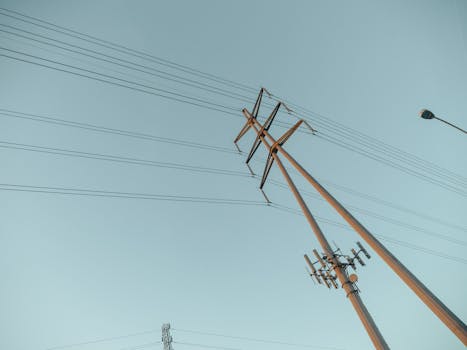“Power Your Future: Choose the Right Solar Battery for Your Energy Needs!”
Choosing the right solar battery for your energy needs is a crucial step in optimizing your solar power system’s efficiency and reliability. With various options available on the market, understanding your specific energy requirements, budget, and the characteristics of different battery technologies is essential. Factors such as capacity, depth of discharge, cycle life, and warranty should be carefully considered to ensure that the battery you select aligns with your energy consumption patterns and long-term goals. This guide will help you navigate the key considerations and make an informed decision when selecting a solar battery that best suits your needs.
Battery Capacity: Understanding Your Energy Requirements
When considering the right solar battery for your energy needs, understanding battery capacity is crucial. Battery capacity, typically measured in kilowatt-hours (kWh), indicates the amount of energy a battery can store and subsequently provide. To make an informed decision, it is essential to assess your energy requirements accurately. This process begins with a thorough evaluation of your household’s energy consumption patterns. By analyzing your monthly electricity bills, you can identify your average daily usage, which serves as a foundation for determining the appropriate battery capacity.
Once you have a clear picture of your energy consumption, the next step is to consider your energy goals. Are you looking to achieve complete energy independence, or do you simply want to reduce your reliance on the grid? If your aim is to power your home entirely with solar energy, you will need a battery system that can store enough energy to meet your daily needs, especially during periods of low sunlight. Conversely, if you are only looking to supplement your energy supply, a smaller battery may suffice.
In addition to daily energy consumption, it is also important to factor in peak usage times. Many households experience spikes in energy demand during specific hours, such as early mornings or evenings when appliances like refrigerators, air conditioners, and lighting are in use. To accommodate these peaks, you may need to choose a battery with a higher capacity than your average daily usage would suggest. This ensures that you have enough stored energy to cover those high-demand periods without drawing from the grid.
Moreover, the efficiency of the solar battery plays a significant role in determining how much usable energy you can extract from it. Battery efficiency, often expressed as a percentage, indicates how much of the stored energy can be utilized. For instance, if a battery has a capacity of 10 kWh and an efficiency rating of 90%, you can expect to access 9 kWh of usable energy. Therefore, when selecting a battery, it is essential to consider both its capacity and efficiency to ensure that you are investing in a system that meets your energy needs effectively.
Another critical aspect to consider is the depth of discharge (DoD), which refers to the percentage of the battery’s capacity that can be used without damaging the battery. Different battery technologies have varying DoD ratings, and understanding this can help you maximize the lifespan and performance of your battery. For example, lithium-ion batteries typically have a higher DoD compared to lead-acid batteries, allowing you to utilize more of the stored energy without compromising the battery’s health.
In addition to these technical specifications, it is also wise to consider future energy needs. As your household grows or as you add more energy-consuming devices, your energy requirements may change. Therefore, opting for a battery with a slightly higher capacity than your current needs can provide flexibility for future expansion. This foresight can save you from the hassle and expense of upgrading your battery system down the line.
Ultimately, choosing the right solar battery involves a careful assessment of your energy consumption, peak usage times, battery efficiency, depth of discharge, and potential future needs. By taking the time to understand these factors, you can select a solar battery that not only meets your current energy requirements but also supports your long-term sustainability goals. This informed approach will ensure that you make a sound investment in your energy future, allowing you to harness the full potential of solar power.
Types of Solar Batteries: Pros and Cons

When considering the right solar battery for your energy needs, it is essential to understand the various types available on the market, each with its own set of advantages and disadvantages. The most common types of solar batteries include lead-acid, lithium-ion, and flow batteries, and each type serves different purposes depending on your specific requirements.
Lead-acid batteries, one of the oldest and most widely used types, have been a staple in the renewable energy sector for decades. They are generally more affordable upfront compared to other options, making them an attractive choice for those on a budget. However, while their initial cost is lower, lead-acid batteries have a shorter lifespan, typically lasting between three to five years. Additionally, they require regular maintenance, including checking water levels and equalizing charges, which can be a drawback for users seeking a low-maintenance solution. Despite these downsides, their reliability and established technology make them a viable option for many homeowners.
On the other hand, lithium-ion batteries have gained popularity in recent years due to their superior performance and longevity. These batteries can last up to 15 years or more, providing a significant return on investment over time. Furthermore, lithium-ion batteries are more efficient, with higher energy density, meaning they can store more energy in a smaller space. This efficiency translates to less energy loss during charging and discharging cycles, making them ideal for those who rely heavily on stored solar energy. However, the initial cost of lithium-ion batteries is considerably higher than that of lead-acid batteries, which can deter some potential buyers. Nevertheless, the long-term savings and reduced maintenance requirements often justify the higher upfront investment.
Flow batteries represent another innovative option in the solar battery market. These batteries operate on a different principle, using liquid electrolytes to store energy. One of the most significant advantages of flow batteries is their scalability; they can be easily expanded by adding more electrolyte solution, making them suitable for larger energy storage needs. Additionally, flow batteries have a long lifespan, often exceeding 20 years, and can handle deep discharges without significant degradation. However, they are still relatively new to the market, which means they can be more expensive and less widely available than lead-acid or lithium-ion options. Furthermore, their larger size and weight may pose installation challenges for some users.
As you weigh your options, it is crucial to consider your specific energy needs, budget, and maintenance preferences. For instance, if you are looking for a cost-effective solution for short-term use, lead-acid batteries may be the right choice. Conversely, if you are willing to invest more upfront for long-term benefits and efficiency, lithium-ion batteries could be the better option. Flow batteries, while still emerging, may appeal to those with larger energy storage requirements or those seeking a long-lasting solution.
Ultimately, the decision on which solar battery to choose will depend on a careful evaluation of your energy consumption patterns, financial considerations, and how much maintenance you are willing to undertake. By understanding the pros and cons of each type of solar battery, you can make an informed choice that aligns with your energy goals and enhances your solar power system’s overall efficiency.
Lifespan and Warranty: What to Look For
When considering the purchase of a solar battery, understanding its lifespan and warranty is crucial for making an informed decision. The lifespan of a solar battery typically refers to the number of charge and discharge cycles it can undergo before its capacity significantly diminishes. Most modern solar batteries, particularly lithium-ion models, boast a lifespan ranging from 5 to 15 years, depending on usage and environmental conditions. Therefore, it is essential to evaluate how often you plan to use the battery and the depth of discharge you intend to apply. A battery that is frequently cycled to its maximum depth of discharge will naturally wear out more quickly than one that is only partially discharged.
In addition to lifespan, the warranty offered by the manufacturer serves as a critical indicator of the battery’s expected performance and reliability. A robust warranty not only reflects the manufacturer’s confidence in their product but also provides peace of mind for the consumer. Typically, warranties for solar batteries can range from 5 to 10 years, with some premium models offering even longer coverage. When examining warranties, it is important to pay attention to the terms and conditions, as they can vary significantly between manufacturers. Some warranties may cover only specific components or may have limitations based on the number of cycles or the depth of discharge.
Moreover, it is advisable to look for warranties that include performance guarantees. These guarantees often specify that the battery will retain a certain percentage of its original capacity over the warranty period. For instance, a warranty might state that the battery will maintain at least 70% of its capacity after 10 years. This assurance can be particularly valuable, as it helps to mitigate concerns about the battery’s long-term performance and efficiency.
As you delve deeper into the specifics of lifespan and warranty, consider the implications of battery chemistry on longevity. Lithium-ion batteries, for example, are known for their superior energy density and longer lifespan compared to lead-acid batteries. However, they often come at a higher initial cost. On the other hand, while lead-acid batteries may be more affordable upfront, their shorter lifespan and lower cycle count can lead to higher long-term costs. Therefore, it is essential to weigh the initial investment against the expected lifespan and performance of the battery.
In addition to the technical specifications, it is also wise to research the reputation of the manufacturer. A company with a solid track record in the solar industry is more likely to provide reliable products and customer support. Reading customer reviews and seeking recommendations can offer valuable insights into the experiences of others who have purchased similar batteries. Furthermore, consider the availability of replacement parts and service options, as these factors can significantly impact the overall longevity and usability of your solar battery system.
Ultimately, choosing the right solar battery involves a careful assessment of its lifespan and warranty, alongside an understanding of your specific energy needs. By taking the time to evaluate these factors, you can make a more informed decision that aligns with your long-term energy goals. In doing so, you will not only enhance your energy independence but also contribute to a more sustainable future.
Cost vs. Performance: Finding the Best Value
When considering the purchase of a solar battery, one of the most critical factors to evaluate is the balance between cost and performance. This relationship is essential because it directly impacts the overall value you receive from your investment. To begin with, understanding the various types of solar batteries available on the market is crucial. Lithium-ion batteries, for instance, are known for their high energy density and longer lifespan, making them a popular choice despite their higher upfront costs. On the other hand, lead-acid batteries, while more affordable initially, often require more frequent replacements and maintenance, which can add to their long-term expenses.
As you delve deeper into the cost versus performance equation, it is important to consider the total cost of ownership. This includes not only the initial purchase price but also installation costs, maintenance, and the expected lifespan of the battery. For example, while a lithium-ion battery may seem expensive at first glance, its longevity and efficiency can lead to lower costs over time. In contrast, a cheaper battery may require replacement sooner, negating any initial savings. Therefore, evaluating the total cost of ownership provides a clearer picture of the true value of your investment.
Moreover, performance metrics such as capacity, depth of discharge, and round-trip efficiency should also be taken into account. Capacity refers to the amount of energy the battery can store, while depth of discharge indicates how much of that energy can be used without damaging the battery. A higher depth of discharge allows for more usable energy, which can be particularly beneficial during periods of low solar generation. Round-trip efficiency, on the other hand, measures how much energy is lost during the charging and discharging process. A battery with high round-trip efficiency will provide more usable energy, enhancing its overall performance.
In addition to these technical specifications, it is also wise to consider your specific energy needs and usage patterns. For instance, if you live in an area with frequent power outages, investing in a high-performance battery that can provide reliable backup power may be worth the extra cost. Conversely, if your energy consumption is relatively low and stable, a more affordable option may suffice. By aligning your battery choice with your energy requirements, you can ensure that you are making a sound investment that meets your needs without overspending.
Furthermore, it is essential to factor in potential incentives and rebates that may be available in your region. Many governments and utility companies offer financial incentives for solar energy systems, which can significantly reduce the overall cost of your solar battery. By researching these options, you may find that a higher-performing battery becomes more financially feasible, allowing you to enjoy the benefits of advanced technology without straining your budget.
Ultimately, finding the best value in a solar battery requires a careful analysis of both cost and performance. By considering the total cost of ownership, evaluating performance metrics, and aligning your choice with your energy needs, you can make an informed decision that maximizes your investment. As the solar market continues to evolve, staying informed about the latest advancements and trends will further empower you to choose a solar battery that not only meets your current energy demands but also positions you for future sustainability. In this way, you can harness the full potential of solar energy while ensuring that your investment remains both practical and economically sound.
Q&A
1. **What factors should I consider when choosing a solar battery?**
Consider capacity (measured in kWh), depth of discharge (DoD), efficiency, lifespan, and warranty.
2. **How do I determine the right capacity for my solar battery?**
Calculate your daily energy consumption in kWh and choose a battery that can store enough energy to meet your needs, factoring in days of autonomy.
3. **What is the importance of depth of discharge (DoD) in a solar battery?**
DoD indicates how much of the battery’s capacity can be used; a higher DoD allows for more usable energy, impacting overall efficiency and lifespan.
4. **Should I prioritize battery efficiency and lifespan when selecting a solar battery?**
Yes, higher efficiency means less energy loss during charging and discharging, while a longer lifespan reduces replacement costs and enhances overall value.
Conclusion
When choosing the right solar battery for your energy needs, consider factors such as capacity, depth of discharge, efficiency, lifespan, warranty, and compatibility with your solar system. Assess your energy consumption patterns, the size of your solar array, and your budget. Additionally, evaluate the battery’s performance in various temperatures and its ability to integrate with smart home systems. By carefully analyzing these aspects, you can select a solar battery that effectively meets your energy requirements and enhances your overall solar energy system.




